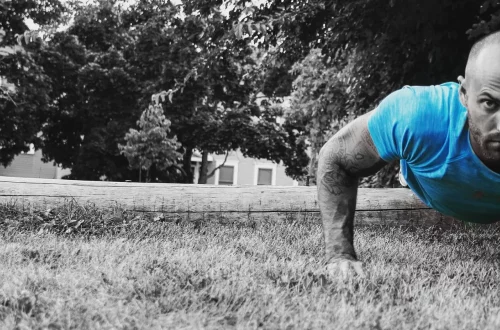
Effective Erector Spinae Workout for a Stronger Back and Core
The importance of a strong back cannot be overstated. It serves as the foundation for nearly every movement we make, from standing up to lifting heavy objects. The erector spinae, a group of muscles that run along the spine, plays an essential role in maintaining proper posture, supporting the spine, and enabling a variety of physical activities. Strengthening these muscles can lead to improved stability, enhanced athletic performance, and a reduced risk of injury. In a world where sedentary lifestyles are increasingly common, focusing on back and core strength is vital for both physical health and overall well-being.
Incorporating a targeted workout routine for the erector spinae not only helps in muscle development but also contributes to better functionality during everyday tasks. Whether you are an athlete looking to boost your performance or someone seeking to alleviate back pain, investing time in strengthening your back can yield substantial benefits. Engaging these muscles can enhance your ability to perform compound movements, improve balance, and support your overall physical structure. Moreover, a strong back is often associated with greater confidence and improved body mechanics, which can positively impact many aspects of life.
As we delve deeper into effective workouts for the erector spinae, it’s important to understand the various exercises that can be employed, the correct techniques to ensure safety, and how to incorporate these workouts into a balanced fitness regime. By focusing on these elements, anyone can work towards a stronger, more resilient back that supports both physical activity and daily life.
Understanding the Erector Spinae Muscles
The erector spinae is a complex muscle group comprised of three major columns: the iliocostalis, longissimus, and spinalis. These muscles extend from the pelvis to the base of the skull and are responsible for extending, rotating, and laterally flexing the spine. Their primary function is to maintain an upright posture and stabilize the spine during movement.
To appreciate the importance of the erector spinae, consider how frequently we rely on these muscles in our daily lives. Every time we bend, twist, or lift, the erector spinae are engaged to provide support and stability. This is particularly critical in activities such as lifting heavy objects, performing athletic movements, and even sitting for prolonged periods. Weakness in these muscles can lead to poor posture, back pain, and an increased risk of injury during physical activities.
Moreover, the erector spinae muscles work in conjunction with other core muscles, including the abdominal muscles and obliques. A well-rounded approach to core training involves not only strengthening the front of the body but also ensuring that the back muscles are equally developed. This balance is crucial for maintaining functional strength and preventing imbalances that can lead to discomfort or injury.
Incorporating exercises that target the erector spinae into your workout routine can lead to improved back strength, better posture, and enhanced athletic performance. Understanding the anatomy and function of these muscles is the first step toward effective training.
Effective Exercises for Erector Spinae Strengthening
To build a stronger erector spinae, a variety of exercises can be incorporated into your routine. Some of the most effective movements include deadlifts, hyperextensions, and good mornings. Each of these exercises targets the erector spinae in different ways, providing a comprehensive workout for the back.
The deadlift is often regarded as one of the most effective exercises for overall strength. It engages multiple muscle groups, including the erector spinae, glutes, hamstrings, and core. To perform a deadlift, stand with your feet shoulder-width apart, gripping the barbell with both hands. Keeping your back straight, lower your hips and bend your knees to lift the barbell off the ground. As you lift, focus on driving through your heels and engaging your back muscles to maintain proper form.
Hyperextensions, often performed on a specialized bench, specifically target the erector spinae. To execute a hyperextension, position yourself face down on the bench with your hips at the edge. Secure your feet and lower your upper body toward the ground, then raise it back to a straight line with your legs. This movement isolates the erector spinae, promoting strength and endurance in these muscles.
Good mornings are another excellent exercise for targeting the erector spinae. To perform this movement, stand with your feet shoulder-width apart, holding a barbell across your upper back. Hinge at the hips, keeping your back straight, and lower your torso until it is almost parallel to the ground. This motion engages the erector spinae while also promoting hip flexibility.
Incorporating these exercises into your routine can significantly enhance your erector spinae strength. It’s important to start with lighter weights and focus on form to prevent injury. Gradually increase the resistance as you become more comfortable with each movement. Consistency is key, so aim to include erector spinae exercises in your workouts at least two to three times a week.
Tips for Safe and Effective Training
While strengthening the erector spinae is beneficial, it is crucial to prioritize safety and proper technique during training. Poor form can lead to injuries, especially when dealing with heavy weights. Here are some essential tips to ensure safe and effective workouts.
First, always warm up before engaging in any strength training. A dynamic warm-up that includes movements like arm circles, leg swings, and hip openers can prepare your body for the workout ahead. This helps to increase blood flow to the muscles and reduces the risk of strains.
Next, pay close attention to your posture during exercises. Maintaining a neutral spine is vital when performing movements that target the erector spinae. Avoid rounding your back or overextending it, as these positions can lead to injury. Instead, focus on keeping your core engaged and your back straight throughout each exercise.
Additionally, listen to your body and adjust the intensity of your workouts as needed. If you experience pain or discomfort, it may be a sign that you are using too much weight or performing an exercise incorrectly. Don’t hesitate to reduce the load or modify the movement until you build the strength and confidence to progress.
Finally, consider incorporating flexibility and mobility work into your routine. Stretching the muscles surrounding the erector spinae can enhance overall flexibility and reduce the risk of injury. Exercises such as cat-cow stretches, child’s pose, and spinal twists can be beneficial for maintaining a healthy, functional back.
By following these safety tips, you can effectively strengthen your erector spinae while minimizing the risk of injury. Always remember that gradual progression and consistency are key to achieving long-term results.
Integrating Erector Spinae Workouts into Your Routine
To reap the benefits of an effective erector spinae workout, it’s essential to integrate these exercises into a well-rounded fitness routine. This includes balancing strength training with cardiovascular exercise and flexibility work to achieve optimal results.
Aim to incorporate erector spinae exercises into your routine at least two to three times a week. This allows for adequate recovery time while ensuring consistent engagement of these crucial muscles. If you are following a split training routine, consider dedicating a specific day to back and core workouts, allowing you to focus on form and intensity without rushing.
In addition to strength training, don’t forget the importance of cardiovascular exercise. Activities such as running, cycling, or swimming can improve overall fitness and promote better recovery. Cardio workouts can also enhance endurance, which is beneficial when performing strength training exercises.
Flexibility and mobility work should not be overlooked either. Incorporating stretching routines, yoga, or Pilates can help maintain muscle elasticity and joint health. These practices can also improve posture and body awareness, further contributing to your strength training efforts.
Lastly, be sure to track your progress. Keeping a workout journal or using fitness apps can help you monitor your strength gains and adjust your routine as needed. Celebrate your achievements, no matter how small, to stay motivated and committed to your fitness journey.
In conclusion, strengthening the erector spinae is crucial for building a strong back and core. By understanding the anatomy of these muscles, incorporating effective exercises, and prioritizing safety, you can develop a robust training routine that enhances your overall fitness. Always remember to listen to your body, maintain proper form, and integrate these workouts into a balanced approach to fitness for the best results.
**Disclaimer:** This article is for informational purposes only and does not constitute medical advice. Always consult with a healthcare professional before starting any exercise program, especially if you have pre-existing health conditions or concerns.




